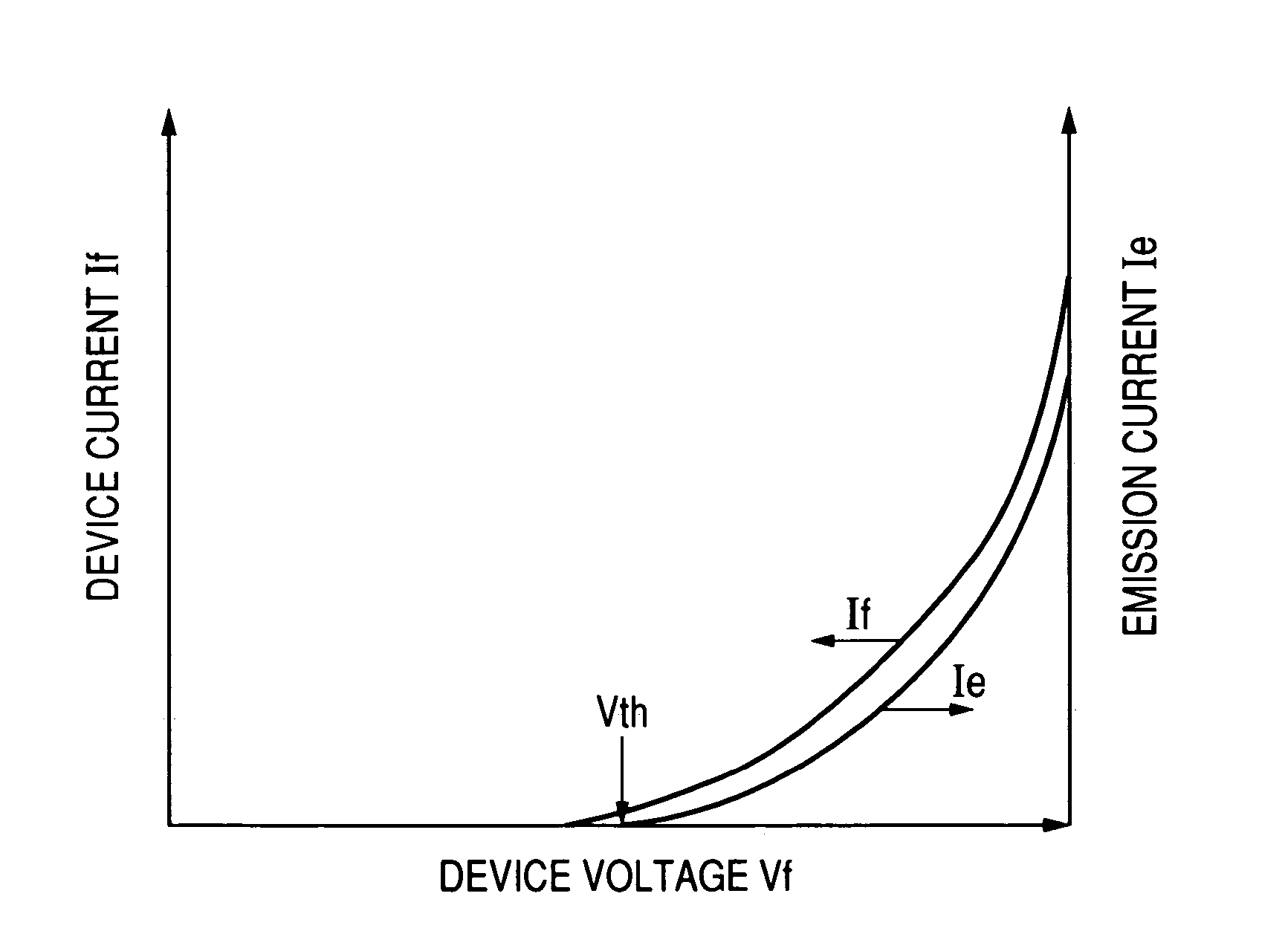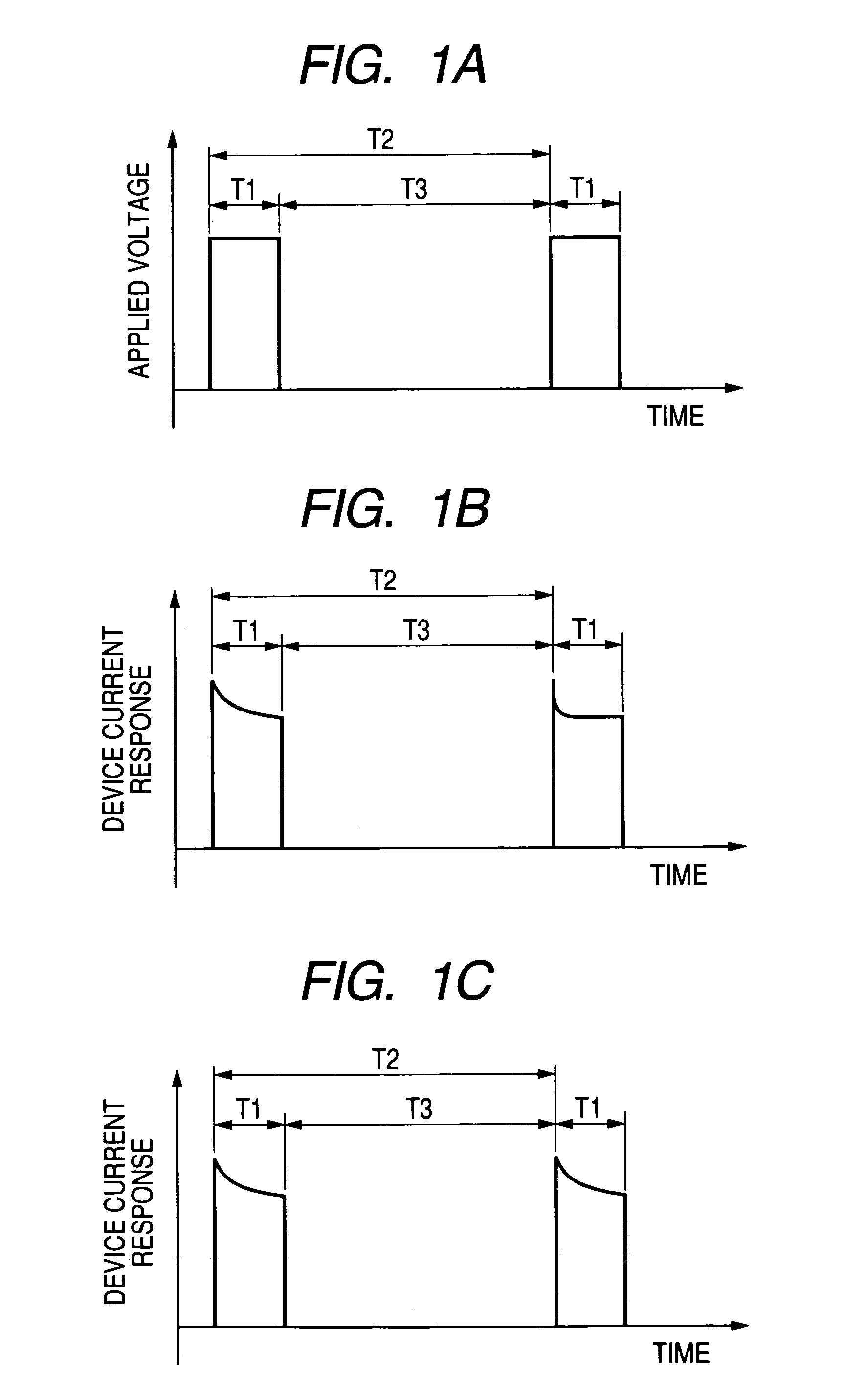Method of driving electron-emitting device, electron source, and image-forming apparatus
a technology of electron-emitting device and electron source, which is applied in the manufacture of electrode systems, instruments, electric discharge tubes/lamps, etc., can solve the problems of variation or deterioration of electron-emitting characteristics, and achieve the effects of improving stability, reproducing high, and prolonging li
- Summary
- Abstract
- Description
- Claims
- Application Information
AI Technical Summary
Benefits of technology
Problems solved by technology
Method used
Image
Examples
embodiments
(First Embodiment)
[0108]In a first embodiment, the electron-emitting device having the structure shown in FIGS. 2A and 2B is manufactured. FIG. 2A is a plan view showing the electron-emitting device. FIG. 2B is a cross sectional view along the line 2B-2B in FIG. 2A. In FIGS. 2A and 2B, reference numeral 1 denotes a substrate, 2 and 3 denote the electrodes (set of electrodes), 4 denotes electroconductive films, 5 denotes a second gap, 6 denotes a carbon film, and 7 denotes a first gap.
[0109]In this embodiment, five electron-emitting devices are manufactured according to the following steps.
[0110]Step (a)
[0111]Used here is the substrate 1 composed of a glass substrate and a film which covers the glass substrate and contains SiO2 as a main component. The glass substrate contains 67% of SiO2, 4.4% of K2O, and 4.5% of Na2O in terms of molar ratio. A strain point of the glass substrate is 570° C. The film containing SiO2 as a main component is formed at a thickness of about 380 nm on the ...
second embodiment
[0148]In a second embodiment, the substrate 1 composed of a glass substrate and a film containing SiO2 as a main component is used instead of the substrate 1 in the first embodiment. The glass substrate contains 66% of SiO2, 5.4% of K2O, and 5.0% of Na2O in terms of molar ratio and has a strain point of 582° C. The film is formed at a thickness of 380 nm on the glass substrate by a sputtering evaporation method. Steps up to step (g) are performed as in the first embodiment. Even in this embodiment, five electron-emitting devices “A” to “E” are manufactured as in the first embodiment.
[0149]As in the first embodiment, the stabilization step corresponding to step (g) is performed and then the electron-emitting characteristic measurement corresponding to step (h) is performed.
[0150]First, a single electron-emitting device “A” of the five electron-emitting devices is used and the pulse voltage shown in FIG. 1A is applied between the electrodes 2 and 3. More specifically, a waveform whose...
third embodiment
[0167]In a third embodiment, used is a substrate in which the film containing SiO2 as a main component is formed at the thickness of about 380 nm on the glass substrate which contains 67% of SiO2, 4.4% of K2O, and 4.5% of Na2O in terms of molar ratio as used in the first embodiment by a sputtering evaporation method. In this embodiment, a single electron-emitting device is manufactured.
[0168]In this embodiment, a resistor of 300 Ω is inserted between the electrode 2 and the power source for pulse voltage application. This assumes the case where a plurality of electron-emitting devices are connected in parallel, providing a state in which a pulse voltage is significantly influenced by voltage drop caused by wirings and the like which are located between the power source for pulse voltage application and the electrodes when a large device current flows.
[0169]For example, when the device current If is changed with the progress of the activation step, the voltage drop expressed by a pro...
PUM
 Login to View More
Login to View More Abstract
Description
Claims
Application Information
 Login to View More
Login to View More - R&D
- Intellectual Property
- Life Sciences
- Materials
- Tech Scout
- Unparalleled Data Quality
- Higher Quality Content
- 60% Fewer Hallucinations
Browse by: Latest US Patents, China's latest patents, Technical Efficacy Thesaurus, Application Domain, Technology Topic, Popular Technical Reports.
© 2025 PatSnap. All rights reserved.Legal|Privacy policy|Modern Slavery Act Transparency Statement|Sitemap|About US| Contact US: help@patsnap.com



